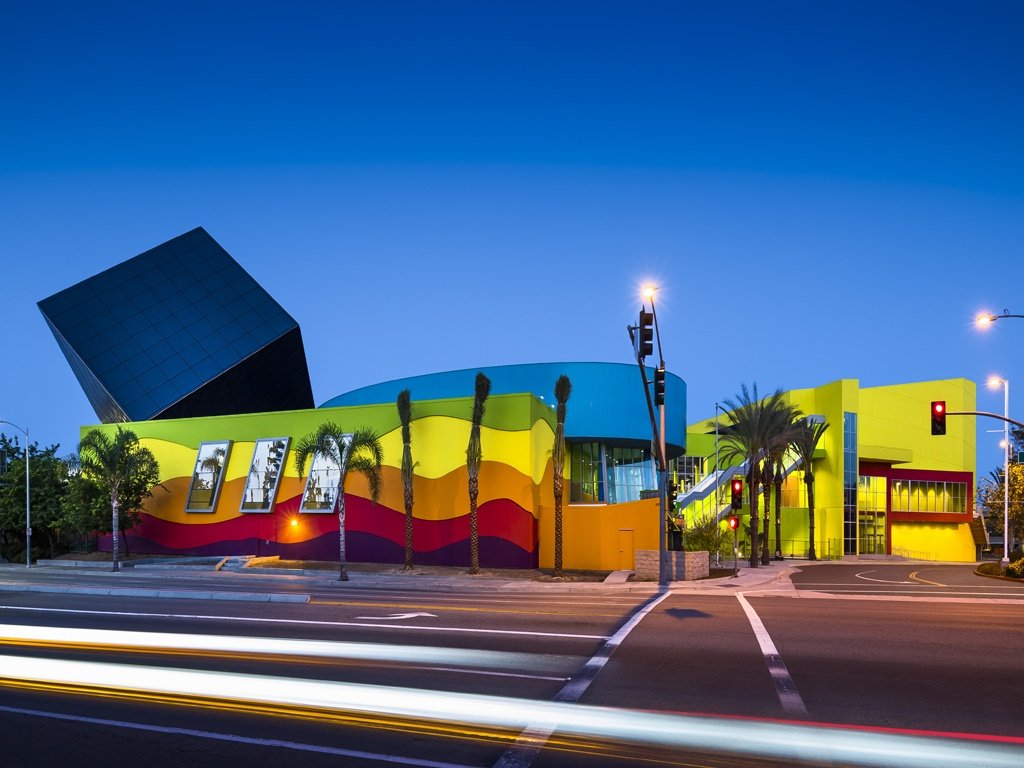At a Glance
Client: Discovery Cube
Sector: Museum & Science Center, EdTech, Game Design
Team: Director of Education, Creative Director, 3 UX Designers, 2 UX Researchers, 1 PM
My Role: Field Study, User Interviews, Task Analysis, Wireframing, Prototyping, User Testing
Impact: A new game significantly increased user interaction and satisfaction, doubling engagement while igniting children's interest in coding and space technology.
This is a capstone project from my Master's program. We worked with Discovery Cube to develop a new digital experience for their visitors. Over a 6-month collaboration with clients and teams, I contributed to the full design cycle, from initial ideation to the creation of high-fidelity prototypes. The outcome is an engaging and enjoyable experience, highly praised by both clients and end users.
Overview
About the Client
Discovery Cube, a renowned non-profit science center, dedicates themselves to inspiring young minds with interactive learning experiences.
Among their highlights is the Mission Control Exhibit, a simulated NASA control room that enables visitors to learn about space technology through a color customization experience.
Discovery Cube
Mission Control Exhibit
From the kickoff meetings, we learned that:
The current experience lacked depth in educational content.
The primary game of color customization, while visually appealing, failed to captivate visitors.
There were disconnections between the game's interactive elements and its educational aspects, leading to a disjointed user experience.
Current Pain Points
Current Experience
To align the main problems, goals, and expectations of the entire project with clients, we dived into a 4-week research sprint. Developed virtual Alignment Workshops within FigJam to ideate, synthesize, and agree on six main parts of the project:
Defining the Problem
As newcomers to educational game design, we delved into four critical areas to inform our creation of engaging experiences for young children:
Starting from Research
Successful Museum Exhibits
Children's Education
Space Exploration
Coding
(It aligns with the client's long-term educational strategy and business needs.)
Visually-Driven: screen experiences that are visually-driven and easily updatable, with varying difficulty levels, can engage a wide age range of users.
Interface-Centric Coding: block-based coding is a common and effective approach in children's educational games.
Storytelling with Immediate Feedback: Incorporating storytelling with immediate feedback significantly enhances learning effectiveness.
Clear Instructions and Familiar Concepts: Utilizing straightforward guidance and well-known space themes ensures educational content is accessible and engaging.
Research Key Insights
Onsite Observation & User Testings
We visited the Mission Control exhibit in person and conducted semi-structured interviews to observe and evaluate visitor interactions, focusing on children's engagement with the exhibit. This hands-on approach aimed to uncover the exhibit's perceptual and engagement strengths and weaknesses. Key findings include:
Brainstorming
To generate ideas for the new game, we divided into 3 groups. Each group explored different facets of combining coding and space exploration into engaging game mechanics.
In collaboration with another UX designer, I conceptualized "Galaxy Rescue in Action," a game that combines block-based coding with space rescue missions to foster heroism. This concept was designed to not only introduce young learners to coding but also to instill a sense of responsibility and boost self-confidence.
After the team brainstorming session, we collectively presented our ideas to the client and made direction selections together.
Inspirations & Game Concept
Upon reviewing the concepts, the clients want to integrate all ideas into a comprehensive game suite.
This decision evolved into the creation of 1 main game centered around directional block-based coding, supplemented by 4 mini-games, each highlighting a different coding concept.
Given the project's scope and timelines, we reached a consensus to focus our deliverables on the mockups for the main game.
Design Direction & Wireframing
Design Direction
Low-Fi of the Main Game
Early Prototypes
User testing was conducted on-site to observe and evaluate firsthand how children engaged with the prototypes. Our assessment concentrated on two critical aspects:
Interaction: Observation focused on users’ understanding and application of block-based coding games.
Perception: Measurement of the overall reaction to the prototypes, considering both the conceptual appeal and the enjoyment derived from the game.
Testing on the Prototypes
Children across all age groups responded positively to the game, particularly finding the 'saving' theme to be highly engaging and motivating. However, there were some areas needing improvement:
Space Explorer: Discover the Universe
Final Design
Inspiration Imagery & Design Assets
The game designed as a gateway for users to embark on their space exploration journey, features a zoom functionality to traverse different universe regions. Meanwhile, we offered different game levels to accommodate a diverse user base of varying ages and skill levels.
Onboarding & Homepage
The game features on-screen, step-by-step guidance, ensuring that users of all ages can easily understand the gameplay and instructions. Players navigate a spaceship using block-based coding, embarking on missions to discover new planets.
Instruction & Gameplay
Upon finishing the game, users will receive congratulations along with fun facts about the space object they discovered. Additionally, the game will feature fail modals to guide users through different game states and provide support in case of errors. This will enable users to learn from their mistakes and continue to progress.
Rewards & Learning
The client was exceptionally pleased with the 'Space Explorer' outcome.
While our direct collaboration concluded with the project, the client expressed a vision that our design would one day be realized as a tangible, interactive experience within the Discovery Cube! ❤️🔥


















